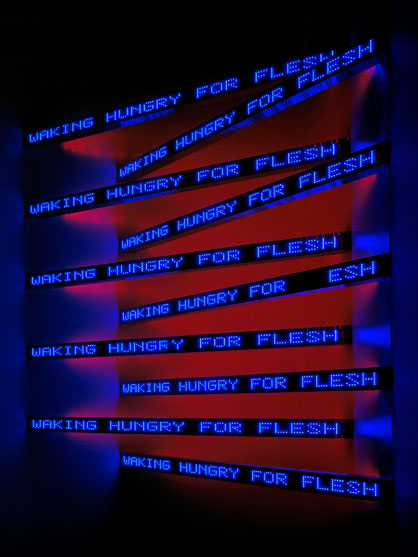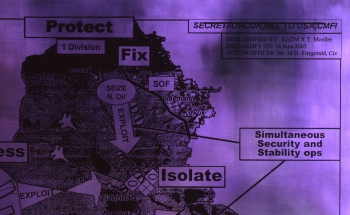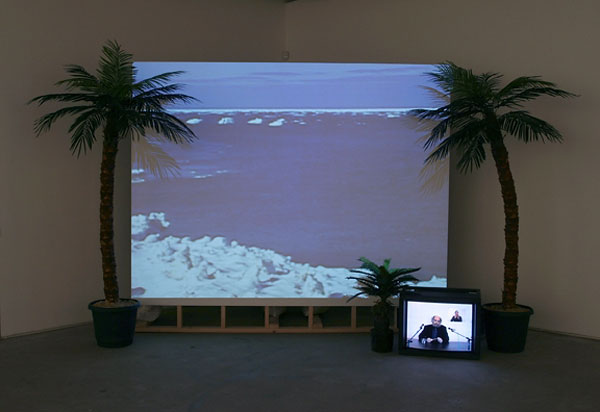The MCA seems to be rolling out one art world A-list superstar exhibition after another. The highly publicized (if generally loathed) Koons show was up from Spring through Fall, followed by Jenny Holzer’s “Protect Protect” which just opened the other week (who’s next? Schnabel? Kruger? Salle?) And it nearly knocks you down with its subsidized blockbluster.

They are grand – brighter, flashier, bigger than ever. And moving faster too. The text zips by so fast now you get nauseated trying to follow along.

Installed with obvious nods to Andre, Judd, and Flavin, the garishly techno formal polish further undercut her blatant desire for direct subversion, not to mention the actual apprehension of her words, old or new (like snippets of declassified government docs).
Worse by far, and at complete odds with the signs, were dozens of rinky-dink stretched canvases piled up on the walls, each with a silkscreened blow-up of a redacted government Guantanamo document, or map of Iraq, senselessly painted in different shades of neon lime green and purple. Seriously? Welcome to "Political Art 101."

In the ambient glow of one large sign sculpture sat two small, spot-lit tables, covered with human bones, some of them metal-band-tagged with bits of text. Called “Lustmord” (German for “sex-murder”), the ‘list of works’ declares it to be about rape as strategy in Kosovo. Sigh.
What is this art really supposed to do? It functions neither as successful agitprop, revelatory exegesis, or more purely formal, phenomenological event – or even interesting conflation of the three. It clearly, desperately wants to reveal to us the bare ominous facts about deadly serious things.
Upstairs, I found sweet relief in survey of the work of Joseph Grigely, titled "St Cecilia." Grigely lost his hearing as a child, and while the matter of his work often emanates from the experience of being deaf among a predominantly more-or-less ably hearing humanity, its an emphasis on that shared humanity that makes the work so compelling.

2007 (photo from Cohan & Leslie Gallery)

Sometimes, just in time, you see a show that reminds you what the art context can provide that other genres can’t, at least not in the same way. “Oh, yeah! That’s what we’re after. That’s why we make this stuff, and make our way to go to see it.”



